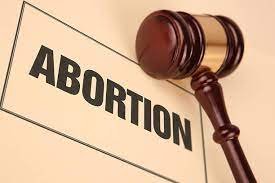Abortions in the United States
Despite a significant decline in abortion rates in the United States between 2011 and 2017, abortion is still rampant among many women. Notably, the rates have steadily declined since 1980, when 30 of every 1,000 women of reproductive age had abortions, to 2018, when only 11.3% of every 1,000 women had abortions (Kortsmit et al., 2020). In 2018, 77.7% of all abortions were performed less than nine weeks gestation, while 92.2% of these abortions were performed less than 13 weeks gestation. By the age of 45, 23.7% of women in the United States have had an abortion. In addition, 4.6% of U.S. women will have an abortion by age 40, while 19% will have done so by age 30 (Kortsmit et al., 2020). Approximately one in four women will undergo this procedure in their lifespan. Additionally, poor women continue to have the highest abortion rates compared to all other demographic categories. These ratios vary significantly by ethnicity and race. Abortion rates are significantly higher among black

A small percentage of women have abortions because of fetal anomalies or health concerns. Additionally, many women have attributed this action to being unready to become a parent besides lacking adequate financial resources and, in some cases, their partner's absence. Moreover, other women have abortions because they fear that a baby would impede them from attending school, going to work, or carrying out other essential responsibilities (Beckman, 2017). Thus, not being ready for parenting, partner difficulties, and economic causes have been found to be the leading causes of abortions among U.S. women. Moreover, other interrelated problems include a decrease in childbearing desire for those women who have already given. Abortion has numerous adverse negative effects on the victims. Abortion may damage an individual's cervix or womb, presenting difficulties in conceiving when one wants to. Additionally, abortion may lead to excessive bleeding, which might ultimately cause death. During the process of terminating a pregnancy, an individual may have an incomplete abortion which necessitates immediate medical attention, therefore, leading to extra expenses. Notably, this act may lead to adverse infections to the fallopian tubes or the uterus, which may cause a painful experience to the victim.
Consequently, abortion weakens the cervix, therefore, increasing the risks of pre-term deliveries in the future. Premature births cause severe health risks to the baby hence leading to high chances of death. And those who survive may experience profound disabilities such as cerebral palsy, autism, psychological disorders during development, and intellectual impairment. Significantly, abortion also causes adverse emotional and psychological problems including, spiritual consequences, drug and alcohol abuse, sexual dysfunction, suicidal thoughts, and feelings of guilt and depression (Reardon, 2018). Moreover, more women will be living with health problems affecting mainly the reproductive system, which may affect the economy of the U.S. because these women will be unable to work to cater for their medical bills. The before mentioned will result in many disadvantaged groups in the community.
What's Your Reaction?















